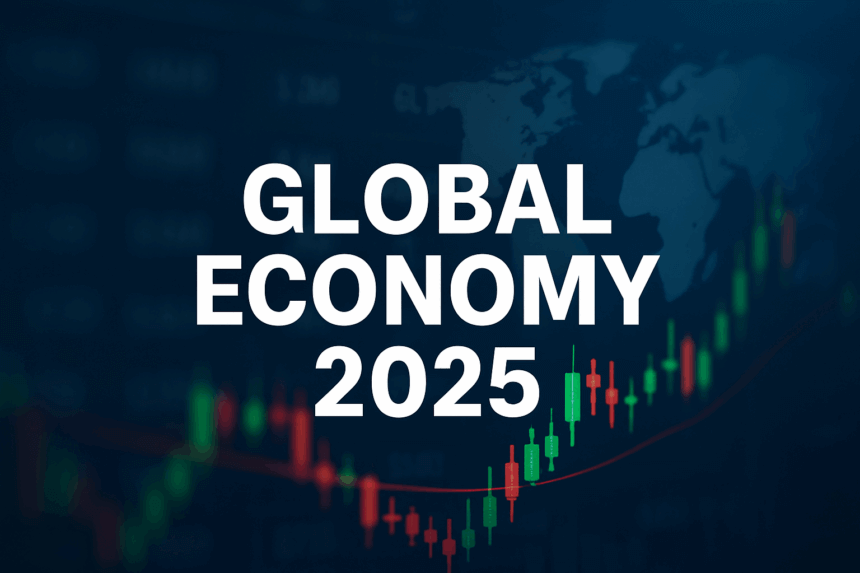Global Economy 2025: Trying to Stay Steady in an Unsteady World
Sometimes it feels like the global economy is walking on eggshells. Things are moving, sure — trade is happening, companies are hiring again — but there’s this uneasy sense that it could all wobble with one wrong step.
As 2025 heads toward its close, most people — from business owners to regular workers — just want to know one thing: is the world economy finally getting back on track, or are we still stuck in the storm?
Growth, But Not the Kind We Hoped For
According to the latest IMF numbers, global growth is hovering around 2.8% — not terrible, but nowhere near what economists were dreaming of after the pandemic.
The U.S. is holding up surprisingly well, thanks to tech and consumer spending. Europe, though, still feels like it’s catching its breath — energy prices and cautious shoppers aren’t helping. And in China, once the engine of world growth, factories are quieter, exports are slower, and real estate problems just won’t go away.
Meanwhile, countries like India, Indonesia, and Vietnam are trying to fill that gap. Investors are paying attention to them in a way we haven’t seen before. It’s like the world’s balance of economic power is slowly shifting east — but without a clear winner yet.
Inflation: Cooling, But Not Cool Enough
People everywhere are still feeling the pinch. Groceries, rent, electricity — it all costs more than it used to. Sure, inflation isn’t rising as sharply as it did two years ago, but in many places, it’s still running ahead of what most families can handle.
Central banks are in a tricky spot. If they cut interest rates, inflation might flare up again. If they keep rates high, small businesses struggle, and borrowing becomes harder. It’s like being stuck between a rock and a hard place — and nobody’s quite sure which way to lean.
The Politics Behind the Money
Let’s not pretend economics happens in a vacuum anymore. Wars, trade bans, sanctions, and even tweets can shake global markets overnight. Companies that once built everything in one country are now spreading out their supply chains, just to stay safe.
Economists call it “de-risking.” Ordinary people call it “expensive.”
And with elections happening across big economies this year, the next few months could set the tone for how connected — or divided — the world economy becomes.
Still Some Bright Spots
It’s not all doom and gloom. Innovation hasn’t stopped.
AI, renewable energy, and green technology are quietly driving a new kind of growth — one that’s digital, sustainable, and surprisingly fast.
There’s a sense that if countries can stop fighting long enough to work together on things like clean energy and fair trade, we might just see a new wave of prosperity.
The Real Question
The truth is, nobody can predict the next year with certainty. But one thing is clear — people are adapting. Businesses are learning to do more with less. Governments are realizing that old economic models don’t always work in a post-pandemic world.
So maybe the goal for 2025 isn’t a booming economy. Maybe it’s a balanced one — steady, flexible, and ready for whatever comes next.
And honestly, after the last few years, that doesn’t sound too bad.









